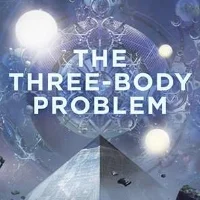This is a speculation on the phenomenon of the recent rise of badass prepubescent female protagonists in popular culture. There will be many spoilers. You have been warned.
The Angry, Silent Type
The wild, raging girl has been around as a character type for years. TvTropes describes her as “Little Miss Badass”—think River Tam in Firefly.
But there are more of badass girls now. Newcomers to the ever-growing list include Laura/X-23 in Logan, Eleven in Stranger Things, and Nova in War for the Planet of the Apes, among others. Angry girls are taking center stage, and people have noticed. In her excellent article for Bustle last July, Rachel Simon points out that all the badass little girls taking over Hollywood movies have one disturbing attribute in common: they don’t talk much.
When they do talk, their rage carries a new depth. In the movie Logan, Laura is silent for the first half of the movie. At the break into the third act, she saves Logan’s life and he says thank you. She answers, speaking for the first time in the film, and he turns on her with anger, asking why she didn’t talk before. Laura explodes into a torrent of Spanish:
““¿Tú pretendes que hable contigo si siempre me insultas, si me gritas, si me intentas dejar atrás? Tú pretendes que abra la boca —”
“Why do you want me to talk to you if you’re always insulting me, yelling at me, if you try to leave me behind? You want me to open my mouth —””
At that point Logan shouts at her to shut up. Dafne Keen, the actress who plays Laura, had her say at an awards ceremony, though, as you can see in the clip below:
Eleven in Stranger Things speaks very little. Nova can't talk at all. Way back in the early 2000s, River Tam in Firefly is described again and again by her brother as super intelligent, but the story never makes good on this detail. River Tam speaks little and beats up a lot of bad guys, reacting more often than taking the lead. So why aren't these characters talking?
What Happened to My Mother?
Perhaps it is because badass girls have no adult female role models that their rage remains inarticulate.
One is hard pressed to find a wild, raging girl with a mother, though most of these characters are looking for one. Melanie, the wild girl in The Girl with All the Gifts, by M.R. Carey, is a young zombie orphan desperately in need of a mother. A biological weapon, based on the fungus that takes over the brains of ants, has taken over the brains of humans and destroyed most of humankind, turning people into cannibals called “hungries.” But there are some infected children whose minds remain clear. Melanie is one, and she has two potential surrogate mother figures in her life. One is Miss. Justineau, her teacher and protector, and the other is Dr. Caldwell, who performs vivisections on these special children, removing their brains in search of a cure. Melanie will do anything to protect Miss. Justineau. But when she finds the body of another young child with their head cut off, Melanie has to reassess her relationship with Dr. Caldwell:
“Underneath the unhappiness, she finds a pure, white anger. Dr. Caldwell has to be made to stop doing these things.… It fills Melanie with a rage so strong it’s almost like the hungry feeling. And discovering that she can feel like that makes her afraid.”
In Logan, the two surrogate mothers Laura finds are brutally murdered in front of her. First Gabriella, the nurse who rescues Laura from the facility where she was created, is tortured and shot to death in a hotel room. Then Kathryn, the mother of the Munson family who offers Laura, Logan, and Professor Xavier a home-cooked meal, is killed by the mutant X-24. The loss of Laura’s female role models is visually underscored by a subtle motif in the film’s production design: all adult women with speaking roles are dressed in modest, shapeless cardigans that hide their figures. And the mothers who gave birth to the mutant children are literally absent. The viewer glimpses the impressions they left on the birthing beds—the stirrups for their feet, the blood they shed giving birth—but the mothers’ bodies themselves are never seen. After the trauma of losing their mothers, it is understandable that angry, badass girls would be reticent to speak.
Trauma Upon Trauma Upon Trauma
Or perhaps it’s more than that. Perhaps these characters don’t talk much because their rage, along with every other emotion, has been smothered beneath many layers of trauma.
In the far-future space opera world of S. J. Kincaid’s novel The Diabolic, Nemesis has been brutally raised in a kill-or-be-killed crèche of monsters. She is a diabolic, a ruthless, powerful bodyguard, engineered to imprint on a single member of the nobility for whom she will “live and breathe all the days of their life.”
Nemesis, to save the woman she loves, or rather has been made to love, must convincingly perform “feminine” at the imperial court. Her story is an extended “Cinderella is a Badass” trope: The girl most unfit for using her feminine wiles to dissemble is the one who has the excruciatingly painful makeover and is sent to the court of the Emperor.
The book contains Game of Thrones levels of violence, rapes, poisoning, a woman ordered to flay herself alive, human sacrifice, dog-fight style entertainments where nobility make casual wagers, and space-chariot races with loser, crew, and family murdered. The primary male character puts on a Hamlet-like pretense of madness to an emperor uncle and a ruthless grandmother who regularly murder inconvenient family members.
Nemesis’s own performance is the heart of the action. She is a strong woman, so traumatized by violence that her emotional range at the start of the book is flat as Nebraska. Murder matters, of course, but her emotional arc is to begin to feel something, anything. When she learns that the woman she loves has been murdered, rage is not a large enough word for the strength of her emotion. Her first choice is to stop performing.
“No more fake smiles, fake courtesies, no more pretending to be something soft and weak. I would shed all pretenses and wreak as much vengeance and destruction as I could before the Emperor cut me down.”
Nemesis finds some measure of healing and a hope of wholeness in her story. But not all badass girls are on the path out of hell; some are trapped. The character of Minya in Strange the Dreamer by Laini Taylor is one raging child who cannot escape. Her fury has stunted her physically, keeping her in the body of a child even as she ages toward adulthood. Minya was born in the city of Weep, or rather above it in a citadel filled with terrible gods. The gods had enslaved the humans below. They had used the bodies of the humans to bear the children of the gods, and Minya is one of these godspawn. There was a nursery full of infants that were half human, half god. Each one would discover they had a gift, a power that would be used to subjugate more humans below. One day a human rises up and kills the gods. For Minya, this day becomes her forever:
“The day to which she was eternally skewered, like a moth stuck through the thorax by a long, shining pin. That day, she had scooped two babies up and held them both with one arm. They hadn’t liked that, and neither had her arm, but she’d needed the other to drag the toddlers: their two little hands gripped in her one.… She turned to race back for more. But there weren’t to be any more. She was halfway to the nursery when the screaming started. It felt, sometimes, as though she were frozen inside the moment that she’d skidded to a halt at the sound of those screams.”
The humans think they have killed all the babies they had had with the gods. Minya, hides in the abandoned citadel for years, raising the four she saved, but is consumed with guilt. She repeats her “eternal, inadequate apology” saying over and over “They were all I could carry.”
Minya’s gift is to trap ghosts at the point of death and enslave them. This is a story of complex and terrible emotions across an intergenerational history of abuse and trauma. The four children she saved want to live a life out of the shadows. The humans below want relief from generations of anguish and shame. Minya cannot move beyond the moment she heard infants being slaughtered. Her gift is torturing ghosts, and isn’t that what vengeance is at its heart? Using the ghosts of the past to punish the present?
Minya is trapped, and because she has no way out of that moment, neither does anyone else in the story. Powerful characters ignore the less powerful, use or abuse them at a whim. And who has less power than a little girl? But powerful characters disregard the wild, raging girl at their peril. As Kyle Stephens has said just this week, “Little girls don’t stay little forever.”

































In the crucible of catastrophe, we learn deeper truths about love, loyalty, and compassion.